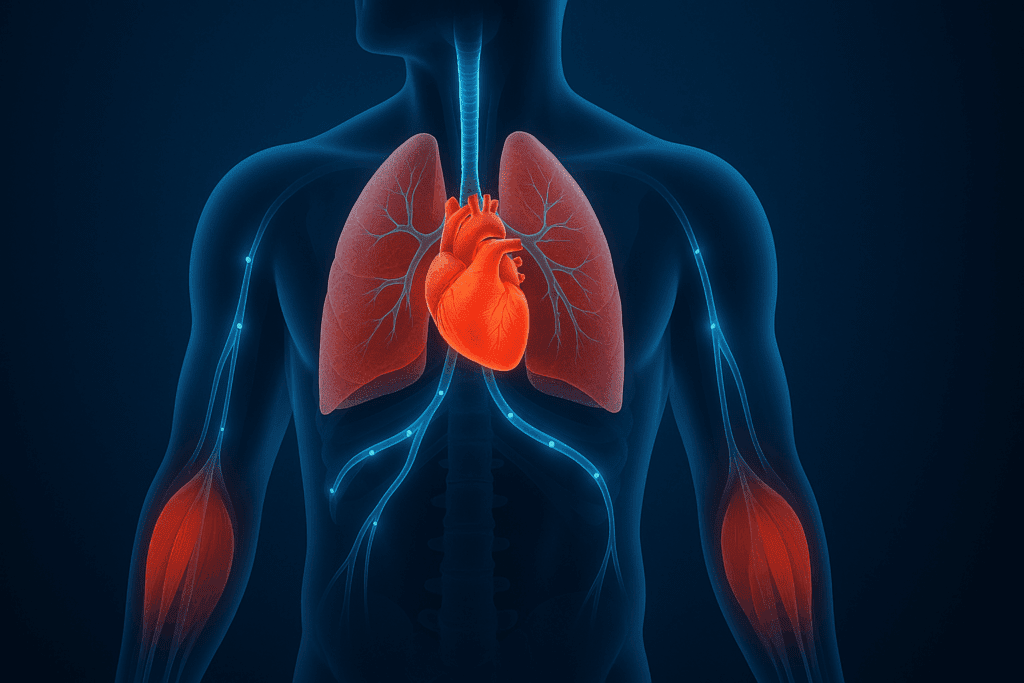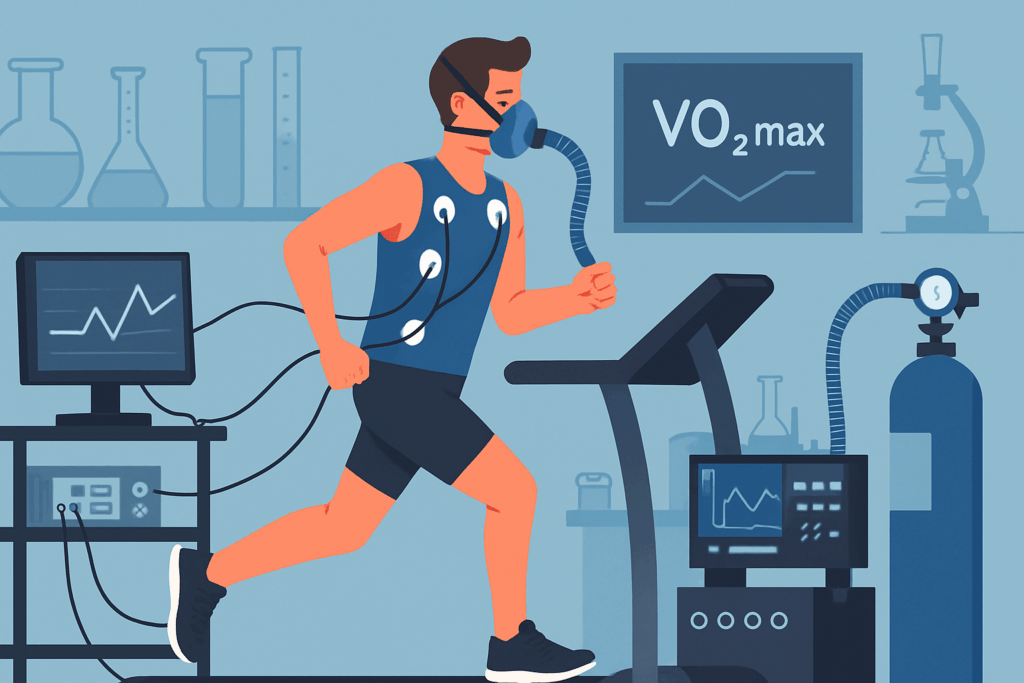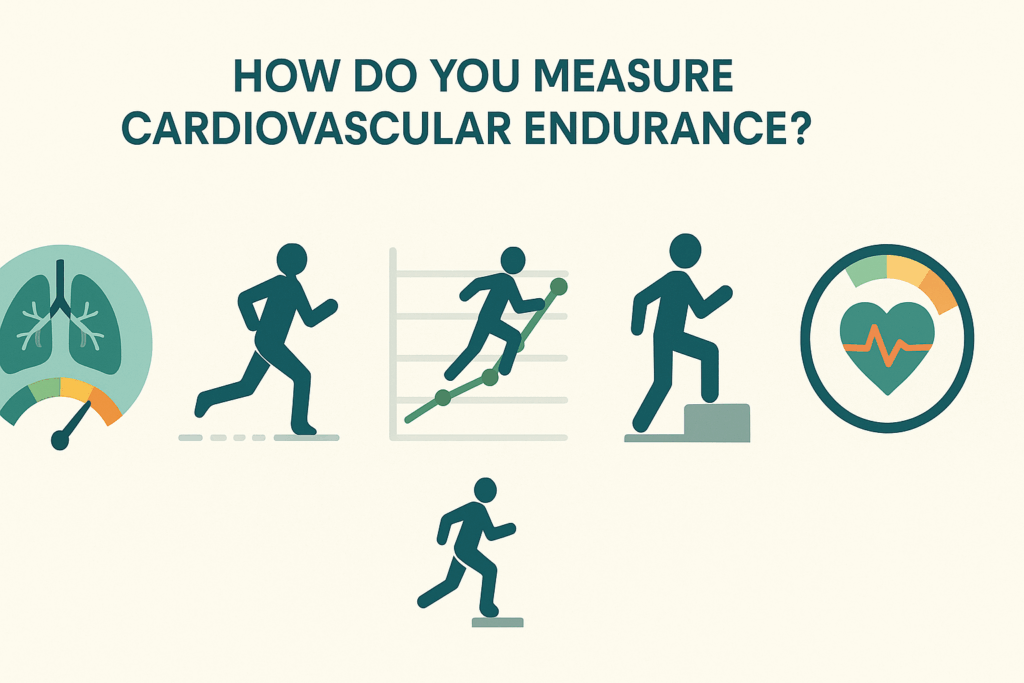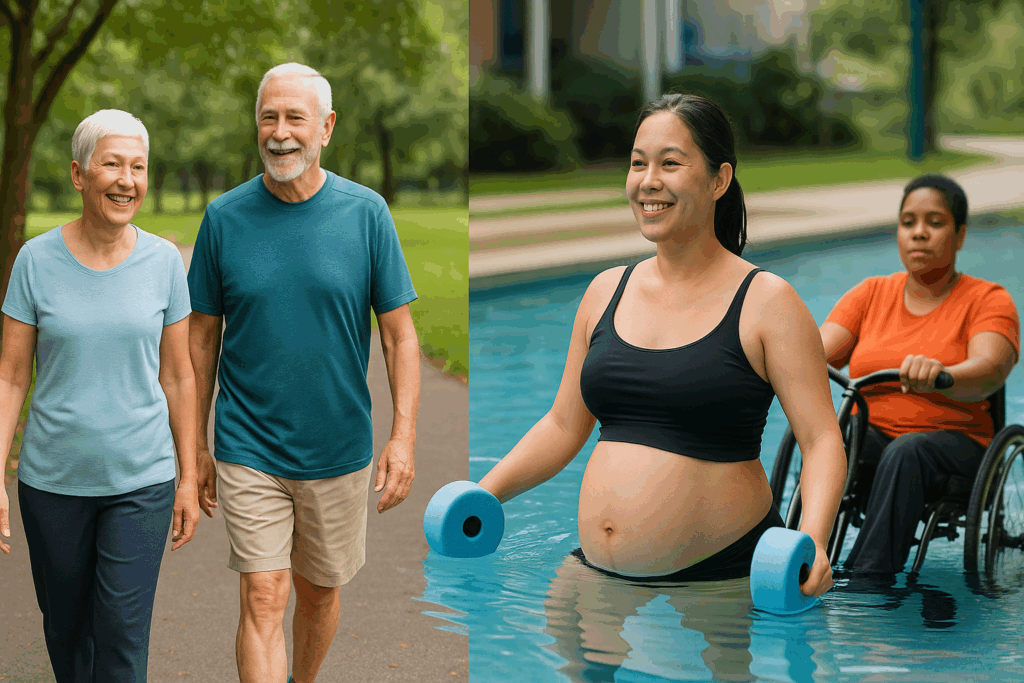Cardiorespiratory fitness is a cornerstone of long-term health and athletic success. Understanding how to improve this vital aspect of physical performance can help individuals unlock greater endurance, sharper mental focus, and overall vitality. Whether you’re training for a marathon or simply aiming to feel more energized during daily activities, the key lies in choosing the right kind of exercise and building an effective plan to support your goals. But which type of exercise is best for improving cardiorespiratory fitness? And how do you measure cardiovascular endurance to ensure your training is actually working?
This comprehensive guide will explore the science behind cardiorespiratory endurance, offer practical advice for training, and explain why aerobic conditioning is more than just a fitness goal—it’s a life enhancer.
You may also like: Smart Nutrition Choices for a Healthier Lifestyle: What to Know About Whole Grain Rice and Whole Wheat Rice

Understanding the Meaning of Cardiorespiratory Endurance
To begin, let’s clarify the cardiorespiratory fitness definition. In simple terms, it refers to the ability of the heart and lungs to deliver oxygen to working muscles during sustained physical activity. The meaning of cardiorespiratory endurance extends beyond exercise—it reflects how well your body can perform daily tasks, manage stress, and recover from exertion. For professionals, athletes, and active individuals alike, higher levels of cardiorespiratory endurance translate into increased stamina and a lower risk of health issues.
In a clinical or athletic context, cardiorespiratory endurance is defined by how efficiently your cardiovascular and respiratory systems work together under prolonged physical stress. It is one of the most important components of overall fitness, playing a key role in everything from metabolic health to immune resilience. When your heart pumps stronger, your lungs work more efficiently, and your blood vessels expand easily, your body becomes more capable of handling both physical and mental challenges.

What Does Cardiorespiratory Fitness Measure?
So, what does cardiorespiratory fitness measure? Primarily, it gauges your body’s ability to absorb, transport, and utilize oxygen during continuous activity. It is a direct indicator of aerobic capacity—how well your system keeps muscles fueled during endurance efforts. Measuring this involves tracking key indicators such as heart rate, breathing rate, and oxygen consumption during exertion. The more efficient your system, the better your body handles exertion and recovery.
A commonly used marker of cardiorespiratory fitness is VO2 max, which measures the maximum amount of oxygen you can use per minute per kilogram of body weight. Higher VO2 max values are associated with better endurance and cardiovascular health. Additionally, improvements in VO2 max often correlate with better performance in endurance sports, reduced fatigue, and decreased risk of chronic disease. This makes it a valuable metric for both medical assessments and personal fitness goals.

How Do You Measure Cardiovascular Endurance?
Knowing how to measure cardiovascular endurance gives you the insight needed to track progress and adjust your training. There are several methods to assess aerobic fitness, ranging from advanced laboratory tests to field-based evaluations. One of the gold standard measurements is a VO2 max test, typically performed in a clinical setting with a treadmill or cycle ergometer and respiratory gas analysis.
However, not everyone has access to laboratory equipment, so alternative tests such as the 1.5-mile run test, the Cooper 12-minute run, or a 3-minute step test are widely used. These field tests are designed to estimate VO2 max based on time, distance, or heart rate. Another effective method is to use a heart rate monitor and track how quickly your heart rate recovers after exercise. A faster recovery generally indicates a higher level of cardiorespiratory fitness.

Which Activities Develop Cardiorespiratory Endurance Most Effectively?
When considering which activities develop cardiorespiratory endurance, the most effective ones involve continuous, rhythmic movement of large muscle groups. These include running, brisk walking, cycling, swimming, rowing, and aerobic dancing. Each of these cardiorespiratory endurance activities can elevate heart rate, improve oxygen utilization, and challenge the cardiovascular system in a meaningful way.
Among these, running stands out as one of the most efficient cardio endurance exercises, especially because it requires no equipment and can be done nearly anywhere. Swimming, on the other hand, offers a full-body workout while reducing joint impact, making it ideal for those with mobility concerns. Rowing and cycling are also excellent cardio endurance workouts, particularly when done at moderate to vigorous intensity levels. The best activity is ultimately the one that you enjoy and can stick with consistently over time.
Examples of Cardiorespiratory Endurance Exercises
To enhance your fitness, you can incorporate a variety of cardiorespiratory endurance exercises into your weekly routine. These may include jogging, hiking, jumping rope, step aerobics, elliptical training, or high-intensity interval workouts. Each of these activities demands sustained energy output and supports improvements in aerobic efficiency.
Let’s consider a few specific cardiorespiratory endurance examples. A 30-minute jog three times a week, complemented by cycling on alternate days, can drastically improve your stamina. Alternatively, brisk walking combined with dance-based workouts or water aerobics offers low-impact options for beginners or those with joint concerns. Variety not only prevents boredom but also reduces the risk of overuse injuries, which is important for maintaining long-term progress.

Establishing a Cardiorespiratory Endurance Goal
Setting a cardiorespiratory endurance goal provides direction and purpose for your training. Whether you’re preparing for an event, managing your weight, or simply trying to feel more energized, having a defined target can boost motivation and accountability. Common goals include walking or running a specific distance, achieving a certain VO2 max level, or completing a designated time of aerobic exercise each week.
To determine how much cardiorespiratory endurance is enough, the World Health Organization recommends at least 150 minutes of moderate aerobic activity or 75 minutes of vigorous activity per week. However, elite athletes or individuals aiming for peak performance may need significantly more. Reassessing goals every few months through a fitness test for cardiovascular endurance can ensure continued progression and help prevent plateaus.
Choosing the Best Type of Exercise to Improve Cardiorespiratory Fitness
If you’re wondering which type of exercise is best for improving cardiorespiratory fitness, the answer depends on your preferences, lifestyle, and physical condition. However, research supports aerobic activities—such as running, swimming, rowing, and cycling—as the most effective at strengthening the heart and lungs. These forms of movement require sustained energy and force the body to adapt by becoming more efficient at oxygen transport.
Among all options, interval-based training—especially high-intensity interval training (HIIT)—has emerged as a powerful method to boost cardiorespiratory performance. HIIT involves short bursts of intense activity followed by brief rest periods and has been shown to significantly elevate VO2 max and improve cardiovascular fitness levels in less time than steady-state cardio. That said, beginners may benefit more from moderate continuous activity before progressing to HIIT formats.

Incorporating Cardiorespiratory Endurance Workouts Into Daily Life
Integrating cardiorespiratory endurance workouts into your routine doesn’t require a gym membership or hours of spare time. Activities like brisk walking during your lunch break, biking to work, or dancing in your living room can all serve as effective aerobic conditioning. The key is consistency and progression—gradually increasing time, intensity, or frequency as your fitness improves.
To keep things engaging, consider rotating different cardiorespiratory endurance activities throughout the week. For instance, run on Mondays, swim on Wednesdays, and take a hike on Saturdays. This cross-training approach allows your body to adapt in diverse ways while minimizing the risk of injury. When your workouts are varied and enjoyable, adherence becomes second nature.

Cardiorespiratory Endurance in Special Populations
It’s important to note that cardio endurance exercises should be adapted for different age groups and physical conditions. Seniors, for example, might benefit more from lower-impact exercises such as walking, stationary cycling, or aquatic aerobics. Pregnant individuals can maintain endurance through modified routines like prenatal yoga or gentle swimming.
Those with medical concerns should always consult a healthcare provider before starting an aerobic regimen. Nonetheless, even moderate increases in cardiorespiratory endurance can provide profound health benefits in nearly every demographic. The goal is always the same: to enhance physical capacity, support mental clarity, and improve quality of life.
How Can You Test Cardiovascular Endurance and Track Progress?
Once your routine is underway, periodically testing cardiovascular endurance will help you determine whether you’re improving. Field tests, like the 1-mile walk test or the 3-minute step test, are simple and cost-effective ways to assess aerobic gains. More precise measurements—such as heart rate variability and wearable fitness data—can also provide valuable insights into recovery and exertion levels.
By tracking how quickly your heart rate returns to normal after exercise or how far you can run without fatigue, you gain a clearer picture of your cardiovascular fitness levels. This data-driven approach enables smarter training, minimizes guesswork, and ensures that your workouts remain both safe and effective over time.
Frequently Asked Questions (FAQ): Cardiorespiratory Fitness and Endurance
1. What are some overlooked benefits of cardiorespiratory endurance training beyond heart health? While most people recognize that cardiorespiratory endurance training improves heart health, its lesser-known benefits are equally compelling. Enhanced oxygen delivery improves cellular regeneration, which supports faster healing after injuries. It also boosts neuroplasticity, meaning that regular cardiorespiratory endurance exercises can improve learning and memory. Additionally, aerobic training can increase mitochondrial density in muscle tissue, enhancing energy output and fatigue resistance. These physiological benefits go far beyond the basics, especially for those pursuing longevity and cognitive sharpness.
2. Which type of exercise is best for improving cardiorespiratory fitness in people with limited mobility? For individuals with mobility challenges, aquatic exercises are often the most effective and safest option. Water’s buoyancy reduces joint stress while allowing full-body movements, making swimming or water aerobics powerful cardio endurance workouts. Chair aerobics and hand cycling are also excellent alternatives. These forms of training are classified under adaptive cardiorespiratory endurance activities, designed to improve cardiovascular fitness levels without exacerbating mobility issues. Over time, they yield measurable gains in both VO2 max and endurance, even among those with chronic physical limitations.
3. How do you measure cardiovascular endurance outside of clinical settings? You can measure cardiovascular endurance in everyday settings by using wearable fitness trackers that monitor heart rate recovery and estimated VO2 max. These tools offer insights into your aerobic response during and after cardiorespiratory endurance workouts. Another informal method is the talk test—if you can maintain a conversation but not sing while exercising, you’re likely in your aerobic zone. Functional tests, such as the 6-minute walk test or a timed stair climb, also serve as accessible ways to test cardiovascular endurance without specialized equipment. These tools help you assess whether your training is improving your cardiorespiratory endurance goal effectively.
4. What are some underrated cardio endurance exercises for building long-term stamina? People often default to running or cycling, but hiking, rowing, and kickboxing are underrated yet powerful cardio endurance exercises. Hiking over varied terrain builds leg strength while simultaneously increasing cardiovascular capacity. Rowing is a low-impact, full-body movement that rapidly improves oxygen transport efficiency. Kickboxing combines aerobic and anaerobic exertion, making it one of the most challenging and dynamic cardiorespiratory endurance exercises available. When performed consistently, these activities can dramatically elevate cardiovascular fitness levels over time.
5. How can high performers use cardio endurance workouts for mental resilience? Elite professionals and athletes often use cardio endurance workouts as tools for stress management and cognitive resilience. The rhythmic nature of long-duration aerobic training promotes mental clarity and enhances emotional regulation. Research suggests that these workouts increase levels of brain-derived neurotrophic factor (BDNF), which supports brain health and function. By incorporating cardiorespiratory endurance workouts into daily routines, high performers often report increased focus, better decision-making, and reduced burnout. These psychological benefits are essential, especially in high-stakes environments.
6. What does cardiorespiratory fitness measure that strength training does not? Cardiorespiratory fitness measures the body’s capacity to deliver and utilize oxygen during extended activity, which is something strength training does not primarily address. Specifically, it reflects the efficiency of the heart, lungs, and vascular system working in unison. While strength training enhances muscular power, it does not significantly improve VO2 max or aerobic threshold. This distinction is critical when choosing which activities develop cardiorespiratory endurance most effectively. For those aiming to improve endurance, the focus should be on prolonged aerobic efforts rather than short, high-load sets.
7. What is a practical way to integrate a cardiorespiratory endurance test into your weekly schedule? A simple and practical way to integrate a cardiorespiratory endurance test is by scheduling a regular 1.5-mile time trial or a 12-minute Cooper run every two to three weeks. These field tests are quick, require no equipment, and offer clear metrics for assessing progress toward your cardiorespiratory endurance goal. You could also measure heart rate recovery at one and two minutes after a high-intensity workout. This non-invasive metric is particularly helpful in identifying cardiovascular fitness levels without lab testing. Keeping a journal to track these results can provide motivation and data to adjust your training strategy.
8. Can short-duration, high-intensity workouts improve cardiorespiratory endurance? Yes, high-intensity interval training (HIIT) has been proven to enhance cardiorespiratory endurance in less time than traditional steady-state cardio. These sessions alternate between intense activity and recovery periods, forcing the heart and lungs to adapt quickly. This method is especially useful for those with limited time, and it has shown to improve cardiovascular fitness levels as much as or more than longer, moderate sessions. However, beginners should ease into HIIT to avoid injury. It remains one of the best answers to the question of which type of exercise is best for improving cardiorespiratory fitness when time is a constraint.
9. What are examples of cardiorespiratory exercises that also promote coordination and balance? Dance-based fitness classes, agility drills, and martial arts offer excellent cardiorespiratory endurance examples that enhance balance and motor coordination. These activities challenge the neuromuscular system while sustaining an aerobic heart rate, providing dual benefits. For instance, a Zumba class may serve as a fun and social way to improve both cardiovascular endurance and spatial awareness. Incorporating such multifunctional cardio endurance workouts helps reduce the risk of injury in daily life by training the body to move more efficiently. These routines are ideal for those looking to optimize both heart health and functional movement.
10. How much cardiorespiratory endurance is enough for someone with performance goals versus general health goals? For general health, most guidelines recommend at least 150 minutes of moderate-intensity or 75 minutes of vigorous-intensity cardio per week. However, individuals with performance-based objectives may need to double or even triple these amounts, depending on their sport or activity. In those cases, integrating progressive overload principles into cardiorespiratory endurance workouts becomes essential. Balancing volume and intensity ensures continual adaptation while avoiding overtraining. Ultimately, understanding the cardiorespiratory endurance definition in context helps tailor the frequency, duration, and intensity of training to suit personal goals more precisely.
Conclusion: Elevating Health and Performance Through Cardiorespiratory Endurance
At the heart of every high-performing athlete—and every vibrant, energetic individual—is a strong, efficient cardiovascular system. Understanding the cardiorespiratory fitness definition is the first step toward building a better body and a more resilient mind. When you know how to measure cardiovascular endurance, select the right training modalities, and stay consistent in your effort, you lay the groundwork for lifelong health and vitality.
So, which type of exercise is best for improving cardiorespiratory fitness? It’s the one you’ll stick with. Whether it’s cycling through nature, running city trails, dancing in your living room, or swimming laps at your local pool, the activity that you enjoy most—and can perform regularly—is the most effective. The beauty of cardiorespiratory endurance exercises lies in their adaptability and accessibility for everyone.
Ultimately, the benefits of a cardiorespiratory program include not only enhanced stamina and endurance but also better mental health, reduced disease risk, and improved longevity. With every beat of your heart and every deep breath you take during exercise, you’re not just training your body—you’re investing in a better, stronger, and more enduring version of yourself.
Was this article helpful? Don’t let it stop with you. Share it right now with someone who needs to see it—whether it’s a friend, a colleague, or your whole network. And if staying ahead on this topic matters to you, subscribe to this publication for the most up-to-date information. You’ll get the latest insights delivered straight to you—no searching, no missing out.
Further Reading:
Unlocking Peak Performance: The Power of Endurance and Strength Training for Runners
Why Zone 2 Training is the Secret to Unlocking Peak Performance

